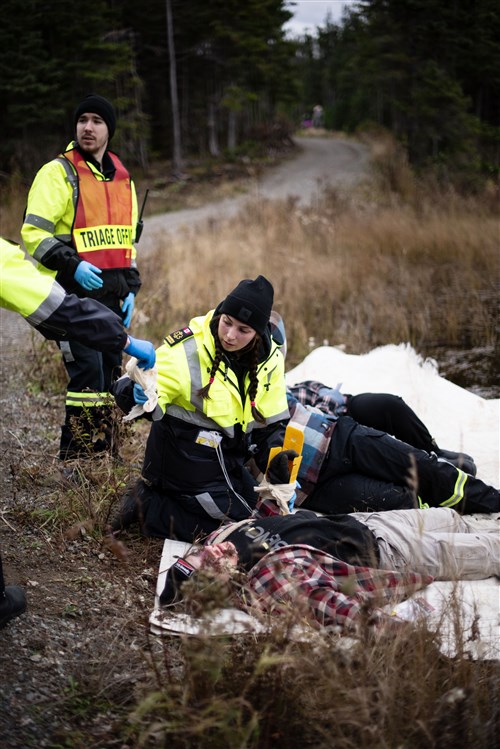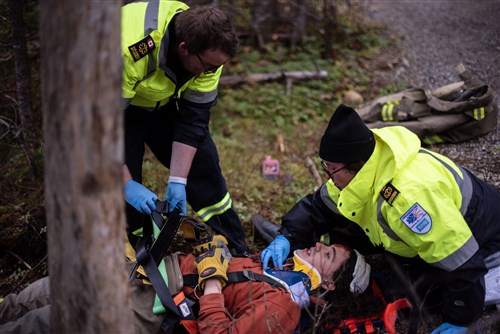When disaster strikes, many remember the timeless advice of Mr. Rogers: “Look for the helpers. There are always people who are helping.”

The helpers were obvious in Stephenville last week as the Primary Care Paramedicine (PCP) Program at Bay St. George Campus held its largest-ever mass casualty simulation. Nearly 50 people were involved in bringing the six-hour simulation to life, challenging paramedicine students to respond to a mock plane crash at Devil’s Pond.
“It’s a good training experience,” said Kandis Baker, a paramedicine student from Codroy Valley. “We have a lot to learn but it’s going well for our first time doing it.”
Baker was especially grateful for the participation of Stephenville Search and Rescue (SAR), learning a lot through working in partnership with them.
SAR Coordinator Gerry Clark said that’s the name of the game.
“With any mock scenario, whatever it may be, there’s more than one agency involved,” he said. “If we don’t work together now and practice scenarios, then it’s not going to happen when the real thing happens. We’ve got to be working together, helping somebody else as best we can. Nobody knows everything. The more training we can get, the more people we can help, the better for everybody.”
Instructor Rob Murphy couldn’t agree more.
“This adds more of the realism factor to the academic learning that we provide in the classroom. It allows them to get out into the field and participate with other agencies like we’re doing here today with SAR,” he said. “We do tabletop scenarios like this in the classroom first, let them know how it’s supposed to go, triage levels, how we triage, why we do it. Getting out into the field, getting hands-on, working in the terrain, it’s all invaluable for their education.”

The value of the mock scenario was obvious to the students, who found themselves waiting for resources with actors playing injured patients, whose conditions often worsened over time due to a variety of factors, from blood loss to hypothermia.
Murphy noted while there is a textbook way to respond to any incident, paramedics often have to deviate from that ideal. For example, they may find themselves with only two responders to a multi-vehicle collision where they could really use six.
“This is great practice for how to triage, how to prioritize which patients get treated first and who gets transferred first,” he said. “It’s great for the province of Newfoundland and Labrador to have more paramedics going out in the field better prepared for this type of event.”
To learn more about the college’s Primary Care Paramedicine program, and other health sciences offerings, visit
cna.nl.ca.
-30-
Media Contact:
Ryan Crocker
Content Specialist
College of the North Atlantic
P: (709) 699-8981
E:
ryan.crocker@cna.nl.ca